Ralph Smedley’s first attempts to create Toastmasters failed. In 1905, he held communication skill-building meetings in Illinois, but the groups lacked leadership and soon fizzled.
Nearly two decades later, in 1924, he successfully launched Toastmasters in California, putting the organization on a phenomenal trajectory. Today membership exceeds 345,000 in nearly 16,000 clubs in 142 countries.
Membership has grown because the Toastmasters program works. How can you play a role in this exciting growth process?
Districts grow in two ways: enlarge a club, and create more clubs. The special “open house” and “demonstration” meetings (also called “demo,” “launch” or “kickoff” meetings) are the most often-used formats to cultivate growth. An open house builds an existing club. A demo meeting creates a new one. Most members are familiar with an open house. It’s a fun, casual event, where guests can ask questions, meet members and get a feel for the unique Toastmasters culture. Demo meetings are less familiar to most members. They introduce the Toastmasters program to an entire group of non-Toastmasters with the goal of helping them form their own club. It’s conducted by an individual member, not a club, and feels more like an informational session than the more celebratory open house.
Let’s take a closer look at each type of meeting and perhaps you can see where you fit into the growth journey.

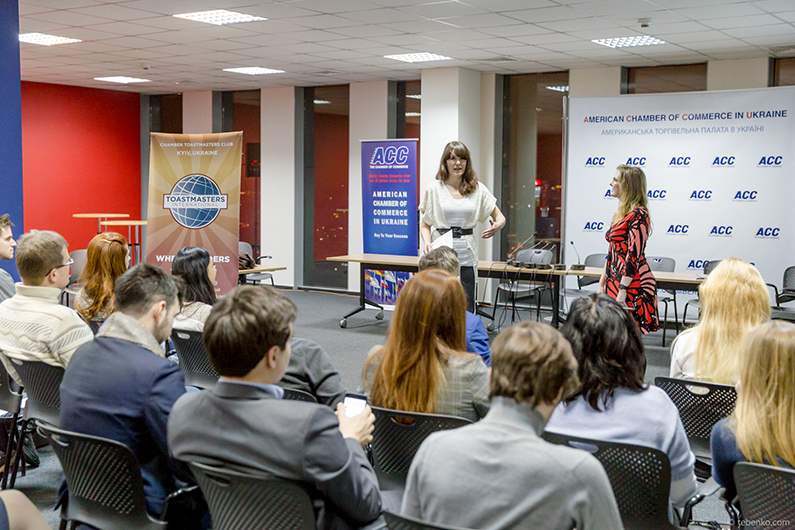
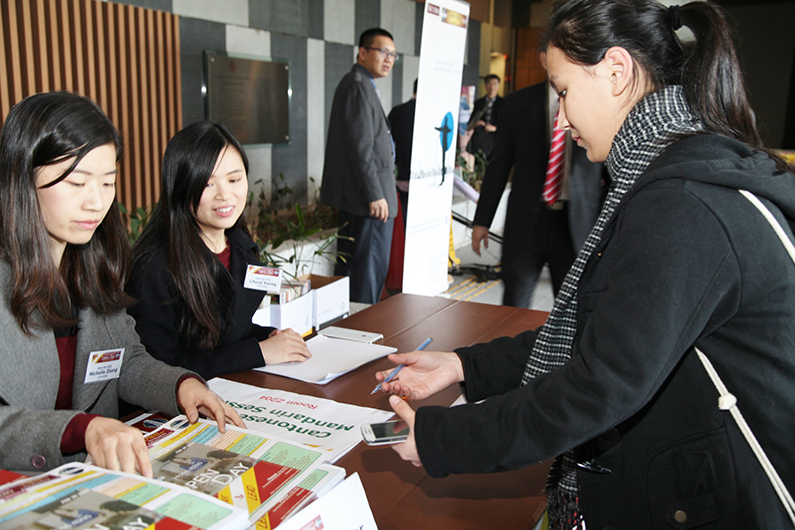
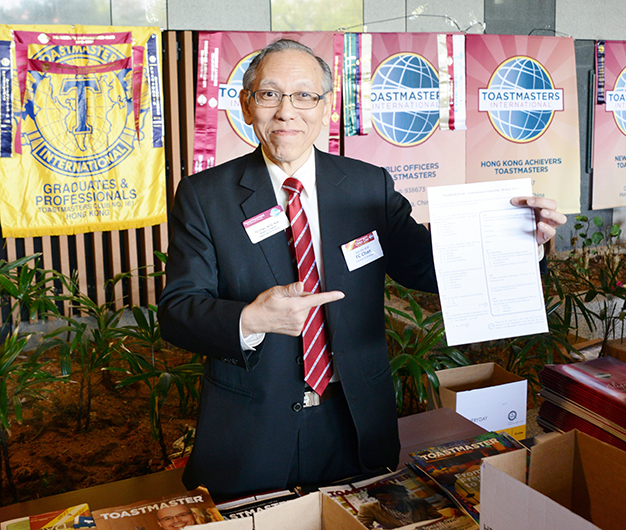
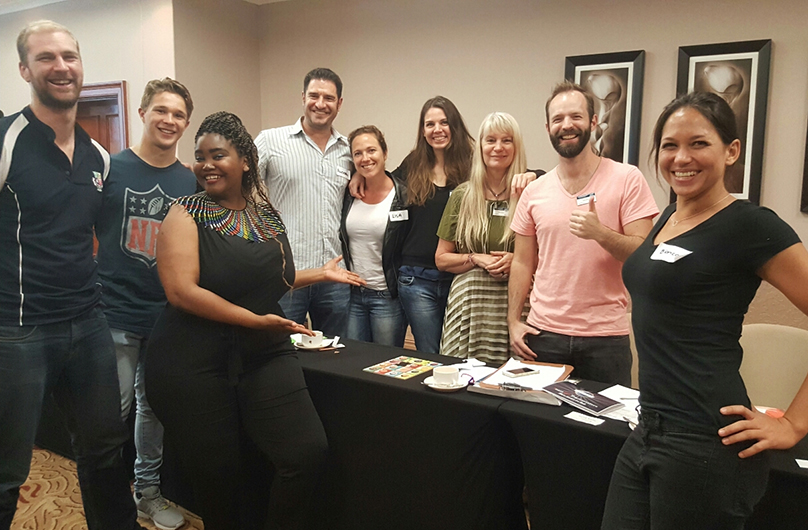
Open House and Demo Meetings: The Similarities
Both meetings:
- Showcase the benefits of Toastmasters and how improved skills can transfer to the world outside Toastmasters.
- Require careful planning with plenty of up-front marketing to generate interest and fill the room.
- Contain the core elements (and clear explanation) of a regular Toastmasters meeting: a Toastmaster, timer, speaker, Table Topics session and evaluation segment.
- Amplify applause and recognition, something unfamiliar but welcomed by most people.
- Encourage visitors to participate, often during Table Topics.
- Aim to obtain signed membership forms.
- Help existing Toastmasters grow in their leadership skills, and remind them of their own reasons for joining.
Open House and Demo Meetings: The Differences
An open house engages an entire club. A demo meeting is conducted by a small team of Toastmasters (as few as two!), often from different clubs. An open house has refreshments, decorations and a headliner speaker. A demo meeting mimics the structure and feel of a regular meeting. An open house highlights one club; a demo meeting gives a broader big-picture view. An open house welcomes all new members equally. A demo meeting labels the first 20 members as charter members, a prestigious label of honor. A club can grow without an open house, but a new club rarely starts without a demo meeting.
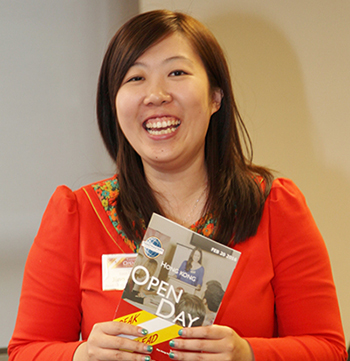 Jing Ouyang, CL, of the Victoria Toastmasters club, shows off District 89’s open day flier.
Jing Ouyang, CL, of the Victoria Toastmasters club, shows off District 89’s open day flier.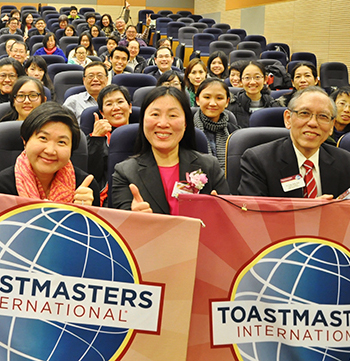 FROM LEFT: Kitty Wong, DTM; Rainbow Lee, DTM; and FC Chan sit with District 89 open day attendees.
FROM LEFT: Kitty Wong, DTM; Rainbow Lee, DTM; and FC Chan sit with District 89 open day attendees.
Tips for Conducting an Open House Meeting
- Engage your entire club. Assign coordinators for refreshments, decorations, advertising and setup. Choose a speaker, either from inside or outside your club. Order marketing materials from Toastmasters World Headquarters (fliers, brochures, ribbons, etc. So much is available there, and much of it is free online!).
- Market heavily! Every club member can help fill the room with visitors. See the sidebar on page 19 for tips on marketing.
- Focus on the right elements. While decorations and food are important, the right speaker topic and evaluator are crucial. The speaker’s topic should be how Toastmasters has benefited them. Whether they’re advanced (demonstrating a level of excellence to which visitors can aspire) or a beginner (one who doesn’t intimidate visitors) doesn’t matter. However, the evaluator should be a more experienced member. Chief Ambassador Phyrne Parker, DTM, from Toronto, Ontario, Canada, says, “A strong evaluator proves the value of Toastmasters. Guests think ‘Well, that speaker was OK; I could do that. But wow, look at the help the evaluator gave her!’”
- Pass the baton. Golden Speakers, a robust club in Fairfield, Iowa (population of 10,000), holds regular open houses. Member Rick Starr, ACG, ALB, says, “We document everything about the event—the structure, publicity, content—so it’s easier to plan the next event. We’ll get 75 to 100 people at these events, and many join over the next few months. After each event, we review what worked and what didn’t and suggest changes for next time.”
- Consider a multi-club event. Past District 86 Director Vitaliy Fursov, DTM, a member of Guelph Public Speakers, Guelph, Ontario, Canada, says, “We organize an area open house instead of a single club open house to promote the program instead of a particular club. This creates increased interest, stronger relationships between clubs and greater energy within each club.” Matt Steele, DTM, from MDC Toastmasters club in Hong Kong, is a past program quality director of District 89. The extraordinary growth of his clubs is due to a unique approach. “We host large ‘open day’ events at division or area levels and invite clubs to participate, giving each a table to promote their club and talk to guests,” Steele says. “We’ll get 100, even up to 300 people from across a city. With so many people the ‘wow’ effect is tremendous!”
- Don’t forget to provide guest packets. These packets have been shown to greatly improve the conversion rate of guests to members. Clubs can make their own or purchase them prebuilt from the online store.
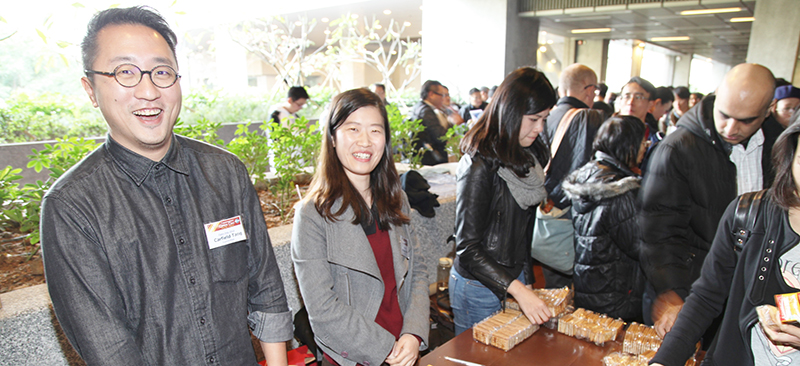 Carfield Tang, CC, and Michelle Zhang greet visitors at the District 89 open day event.
Carfield Tang, CC, and Michelle Zhang greet visitors at the District 89 open day event.Tips for Conducting a Demo Meeting
- Know your audience. A corporate demo meeting differs from a community demo meeting because the needs of potential members are different. Kathleen Lubin, DTM, a past program quality director for District 52 in Southern California, says, “For a corporate club, we conduct an informational meeting with corporate leaders first to assess their needs.” Steele echoes this: “Getting support from corporate management as high up as possible helps. It makes a difference for staff to see someone very senior in the kickoff meeting—especially if they do the opening remarks to set the scene for why the company is supporting the creation of a club.”
Andrew Chiu, DTM, of Personal Development Toastmasters, North Hollywood, California, has helped charter about 30 corporate, community and specialty clubs. He describes the AIDA cycle of Attention, Interest, Decision, Action: “For a corporate demo meeting, you’ve passed the Attention and Interest phases, because the corporate leaders let you in. You might be past the Decision phase if a company knows for certain they want a club. The focus is entirely on the Action. This defines how you approach the demo meetings because now your close can be succinct and decisive.”
- Have a strong evaluator. Chiu emphasizes that. “The evaluator is the most underrated segment, and where many demo meetings can fail. The decision-makers don’t see themselves giving manual speeches; instead, they visualize themselves getting evaluated (or coached).” He says it’s important to appeal to the context of the corporate audience. Managerial leaders may prefer an evaluator with strong assertive leadership language, but younger employees may prefer an informal and personable manner. “If the evaluator nails the assignment, you can get 80 to 100 percent of the people to sign up right away,” says Chiu.
- Be professional and do things right. Deniz Senelt Kalelioglu, DTM, of Istanbul, Turkey, has helped build 13 clubs in the country where previously there was only one. She says, “From the beginning, conduct the meeting properly. Don’t think you can start any way and fix it later. Show the proper meeting elements. For example, the feedback form used by members for each speaker is an amazing tool. It develops evaluation skills little by little and gives the speaker different people’s perception. Let visitors use it too. It will … give them a taste of the process.”
Kalelioglu’s enthusiasm is infectious. When there were no other Toastmasters clubs in Turkey, she was intentional about getting help. When asked how she did that, she says, “I sought out experienced Toastmasters, made myself visible and went to the International Convention year after year. As the first and only member from Turkey, I carried our flag onstage at the opening ceremony, made friends and asked for guidance. I shared all these experiences with the people in Turkey. I tried to lead by example, and I worked to become a DTM.”
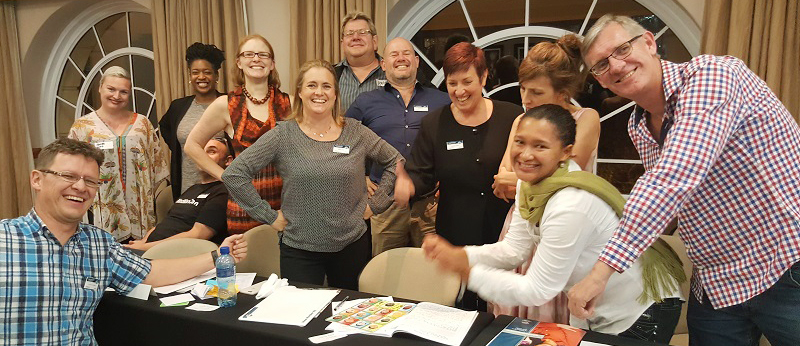 Toastmasters in Cape Town, South Africa, conduct a demo meeting to charter the ToastED club for aspiring TEDx speakers.
Toastmasters in Cape Town, South Africa, conduct a demo meeting to charter the ToastED club for aspiring TEDx speakers.
Don’t Forget the Follow-up!
Follow-up, such as an email, handwritten note or personal phone call, can help an undecided guest become an excited member. Get their permission to add them to the club email list and keep them on it until they unsubscribe. Past Division Director Dana Barnes, DTM, a member of three clubs near Cheyenne, Wyoming, says, “One visitor joined after 13 years (yes, 13!) because she kept getting emails.” Don’t get discouraged. Dana says, “We had a club here in Cheyenne with only three members. They had an open house in January and achieved President’s Distinguished in June. It can happen!”
A new club needs 20 members to start. If the required 20 want to join after a demo meeting, that’s awesome! But if not, don’t quit. Repeat the process of marketing and conducting demo meetings. Past District 10 Director Dave Wiley, DTM, a member of three clubs in Mayfield Heights, Ohio, says, “Corporate clubs usually start faster, within one or two meetings. But community clubs may take longer. Build the expectation with the group that they need 20 members to start. Maintain enthusiasm. Six or eight excited people can draw in more people, even if it takes more meetings. One of our strongest clubs took three months to charter. The demo team was creative with promotion, but they were patient and persistent.”
Perhaps Ralph Smedley would have had earlier success with one of these special meeting formats. Certainly, you can. Why not try your hand at hosting an open house or being part of a demo meeting team? There’s no better feeling than when a visitor says, “Here’s my application. I can’t wait to get started!”
Maureen Zappala, DTM, AS is a former NASA propulsion engineer. Today she’s a professional speaker, author and presentation skills coach, as well as founder of High Altitude Strategies, a coaching and speaking service. Visit her website to learn more.



 Previous
Previous
 How to Promote Your Open House and Demo Meeting
How to Promote Your Open House and Demo Meeting
 Previous Article
Previous Article